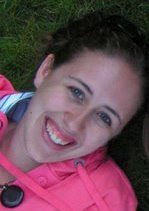I took notes on this proof the other day while observing Mr. Provo and Mr. DePalma team teach:
Start with a circle with the velocities pointing in the tangential direction to the circle. Draw the radius so students can see the velocity is perpendicular to the radius. Label the angles and radius so students can see they are the same (even if one angle is larger, it means the arc covered in that time is longer).
The next step in the proof is some vector addition. Placing two vectors together (not using the initial vector since it has no vertical component), students can find the direction and magnitude of the acceleration. According to the image below, the acceleration will be toward the center of the circle.
This triangle (when drawn well) will be a similar triangle to those in the circle. This means we can create a ratio.
The arc(ab) can be written as the velocity multiplied by the change in time - the circle image. Therefore, the first part of the ratio can be written as v*(delta)t/r. The triangle diagram shows the change in velocity divided by the magnitude of the velocity is analogous to the first part.
v*(delta)t/r ~ (delta)v/v
Now we want to get the deltas on the same side.
(v^2)/r ~ (delta)v/(delta)t
And we know that (delta)v/(delta)t is also equal to acceleration. So...
(v^2)/r ~ a
But, this is only an approximation, so we've got to figure out how to make it exact. Well, as the angle between the vectors approaches zero (again referring to the circle diagram), the arc(ab) approaches a straight line. And as the change in time approaches zero (as measurements become more instantaneous), the velocity becomes perpendicular to the acceleration. This means the approximation we made can be exact - both the velocity and radius are perpendicular to the acceleration.
(v^2)/r = a !!!
This isn't the most clearly written proof, but I'll work on it.
Things to remember:
- As velocity increases, so does acceleration.
- As the radius increases, the acceleration decreases.








 I was given the Teacher's Edition of this book as a graduation present and it is EXCELLENT!!
I was given the Teacher's Edition of this book as a graduation present and it is EXCELLENT!!


.jpg)






